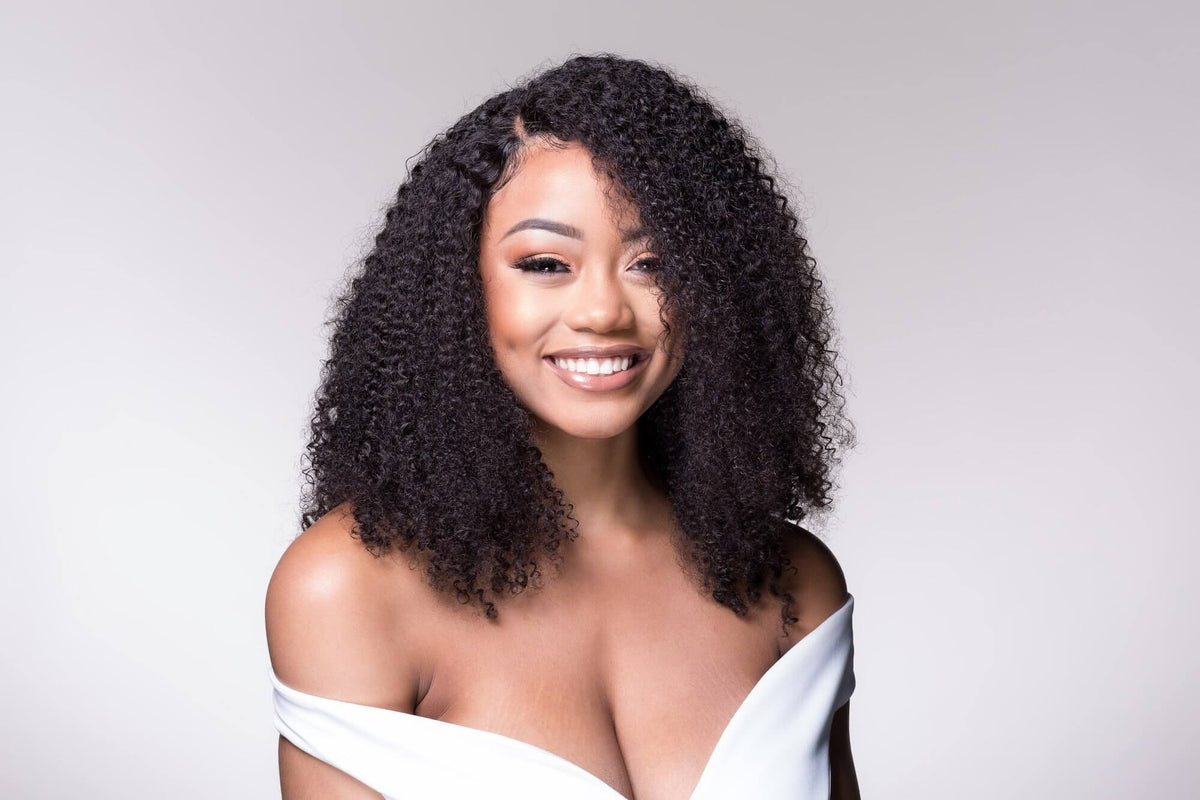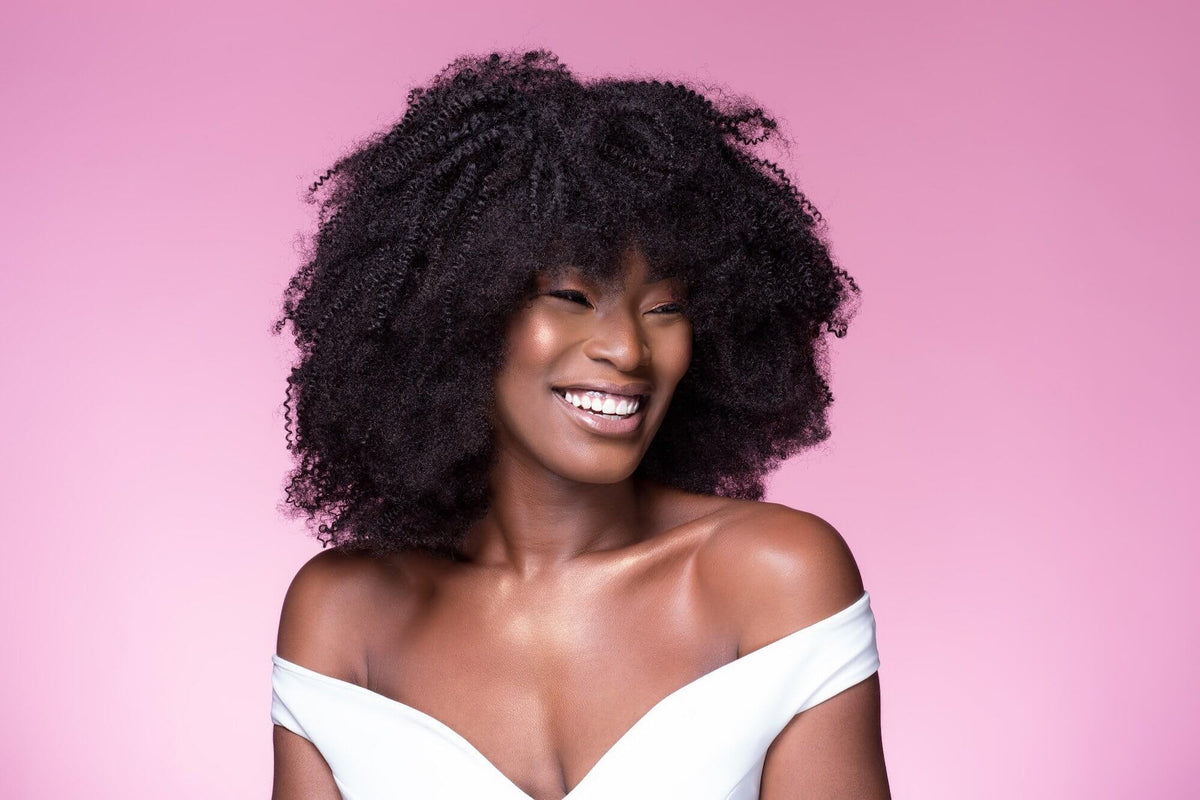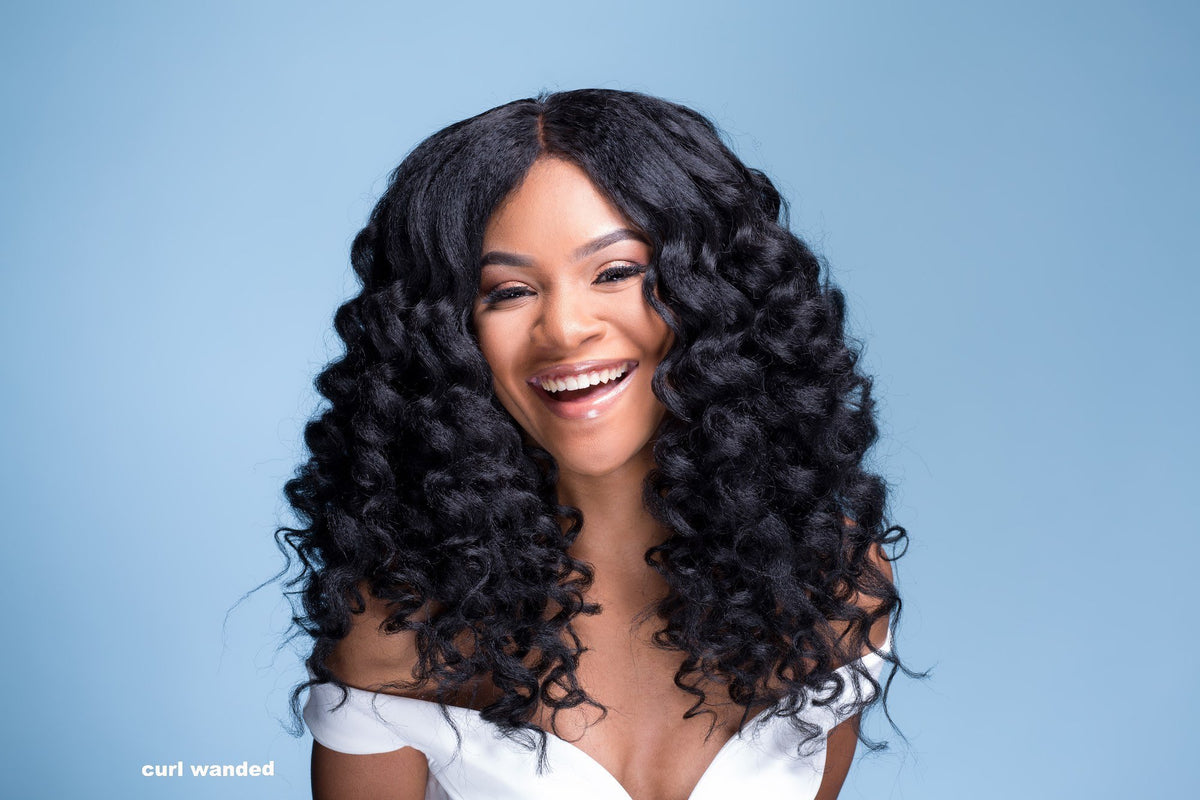
Are you a new Natural? Are you wondering what your hair type is and how to deal with your curls? We see various hair types via charts floating around in the cyber world. Hair types are categorized ranging from Type 2 to 4. Hair types 2 and 3 are relatively straight or have wavy curl patterns, while hair types 4 feature distinct curls and "z patterns".
Each hair type defines or categorizes the hair into sub-categories. Type 4 has three different sub categories: 4A, 4B and 4C. The categories identify the different types of tightly coiled type 4 curls. Although curl patterns may seem similar they are in fact very different and each requires different care. Type 4C hair is deemed to be the most challenging hair type to maintain because it is naturally dry, has little definition, can be difficult to style and requires daily maintenance.
At KinkyCurlyYaki, we love natural curls regardless of the challenge of the hair type. Type 4C hair is beautiful. It is unique, can be easy to care and maintain as well as styled if you have the right tips. As a 4C new natural finding someone with your similar hair type can give you style insights and help you maintain your crown. In this brief post we talk about how to identify type 4C hair as well as how to style, maintain and protect your natural curl pattern.
How to Identify 4C Hair
Type 4C hair is said to be 4B’s twin, however, the coils are tightly kinked. After it is washed with no products added (natural state) the hair has no definition unlike 4A and 4B hair. The strands will almost never clump together without the use of styling techniques such as the preying hands methods, twisting, braiding, or shingling. Type 4C hair can range from fine to thin to soft to coarse. In addition, this hair type shrinks more than 75 percent. So, if you have 3 inches of hair it may look like you have only 1 inch or less if the hair is not stretched. And, it is the most fragile out of all the 4 hair types.
How to Care for 4C Hair
Remember that saying "what works for someone may not necessarily work for you" even though you have similar hair types? Keep that statement in mind for this section. These are general tips on how to care for your 4C hair type and curl pattern. All of them may not apply or work for you while others will. To learn more about the best ways to start caring for your natural hair try each tip to eliminate what doesn't work and discover what does.
- Use a humectant as a leave-in to protect your hair from the harsh atmospheric elements.
- Gels or curl defining custards are your best friends because they stretch and define your coils especially with twist outs and braid outs.
- Sleep with a satin scarf or cap in order to prevent breakage, single strand knots and split ends.
- Detangle on only wet hair. You can add slippery elm or marshmallow root to your detangler for a much easier process.
- Ensure to use quality moisturizing products since the hair is naturally dry and needs to retain moisture.
- Wash your hair with creamy shampoos or conditioners for added moisture needed for your kinky texture.
- Use sulfate free shampoos in order to prevent breakage and moisture loss.
- Deep condition on a weekly basis in order to improve the hair elasticity and moisture retention.
- Water is also your best friend. Saturated hair helps with distributing the product and detangling process by making it easier.
- Don’t overuse styling products because it can result in frizzy, dry and dull hair and no one wants that.
- Keep your hair stretched or detangled as possible in order to prevent excessive tangling, single strand knots and breakage due to its fragility.
- Wear a low maintenance style such as twists, braids, buns or twist/braid outs.
- Increase your protein deep conditions since your hair is fragile and needs all the strength and elasticity it can absorb.
- Try to avoid brushes and small tooth combs so that breakage is reduced.
- Accept that "wash & gos" may not be for you.
- Know your hair porosity.
- Use hot oil treatments for moisture.
- Moisturize and seal with oils and butters in order to keep the moisture in.
- Wear protective styles occasionally to reduce breakage such as natural hair wigs.
- Avoid co-washing as much as possible.
How to Style 4C Hair
There are multiple natural hair styles you can style 4C hair in. Just choose the one that fits into your personal style and protects your hair. Also consider how much time you have to style your hair daily and choose a style that convenient for you. Here is a list of style ideas you can choose from:
- Goddess Flat Twist
- Bantu Flat Out
- Easy Twisted Updos for special events
- Bantu Knots
- Curly Mohawk
- Twist outs
- Braidouts
- Buns
- Sleek ponytails
- Afro
For even more inspiration consider following these natural hair celebrities with the 4C hair type: Viola Davis, Erykah Badu and Lupita Nyong’o.
Every queen's hair type is different so you may have full 4C hair type, a mix of 4C and 4B hair or a mixture of all Type 4 hair including 4A, 4B and 4C. No matter what Type 4 hair texture you have embrace and nourish your kinks and coils.
Remember everyone’s hair is different so it may not look exactly like the chart. The charts are there as a guides to assist us in learning how to care for our hair but we should not subscribe to the standards. Be yourself, embrace your hair type and most importantly - enjoy the journey.



